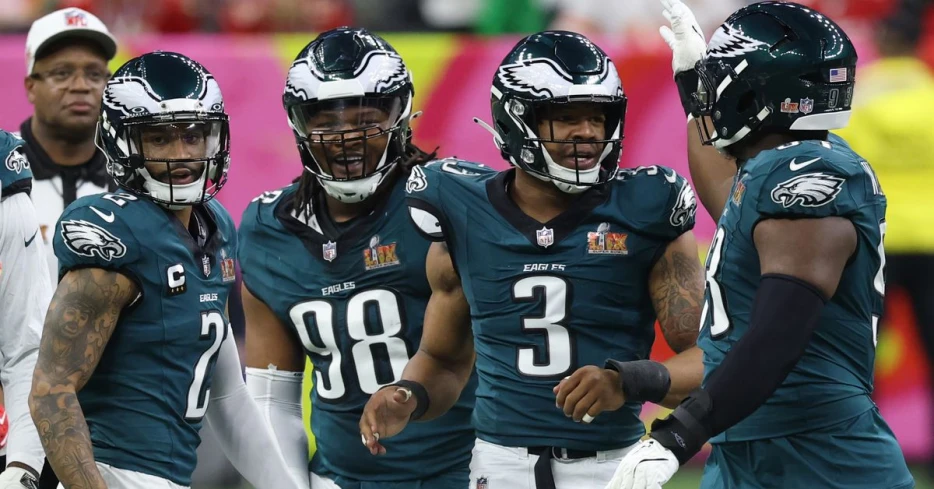
 Bleeding Green Nation
Bleeding Green Nation
The Philadelphia Eagles’ have a lot of dead cap on defense, so how are they spending money on that side of the ball?
The Philadelphia Eagles are one of the most consistently successful franchises in the NFL, and have a proven track record of success since Nick Sirianni took the helm alongside general manager Howie Roseman. That, plus a dominant Super Bowl win in February, make the Eagles an obvious model for other teams to follow. But what exactly is it that the Eagles do that leads to so many wins?
The reality is that it’s a combination of things: coaching, roster management, excellent drafting, and savvy moves in free agency. Some of those can be replicated by other teams, while others can’t – at least, not easily. Every GM thinks they’re going to draft good players and nail their free agency signings, or at least I hope they do!
How do the Eagles build out their roster and choose to spend their money, though? That’s something we can take a closer look at, and something that the rest of the NFL might be able to learn a thing or two from. After examining the Eagles’ offense last time, we’ll now transition to the defense. How does Philadelphia allocate money on the defensive side of the ball compared to the offense? All numbers referenced in this article are provided by Spotrac.
First things first, it’s important to note the difference between “salary cap spending” and “cash spending”. Salary cap spending is money spent that specifically counts towards the NFL’s salary cap, which is set by the league every season. Teams cannot go above the salary cap under any circumstances–the NFL takes this very seriously. Cash spending, on the other hand, is the actual money paid out by teams in a given season.
The Eagles are notorious for backloading deals and spreading salary cap hits far into future years through a variety of mechanisms, including prorated bonuses and adding void years to contracts. That does make it a little difficult to parse things off of salary cap numbers alone, so we’ll be incorporating cash spending into the mix as well. A great example of this would be comparing the combined salary cap cost of the offense, which ranks 23rd in the NFL, versus the cash spending on offense, which ranks second in the NFL. That’s a huge difference!
While the Eagles offense is relatively cheap at the moment but will skyrocket in price quickly over the coming years, the defense is currently the opposite. There’s quite a bit of dead money tied up in the secondary and a few big contracts that were just given out, but this side of the ball is in the midst of a significant youth movement. That’s a long-term key for this roster, as there will be limited salary cap left for the defense when the offense’s bills start to come due in future...